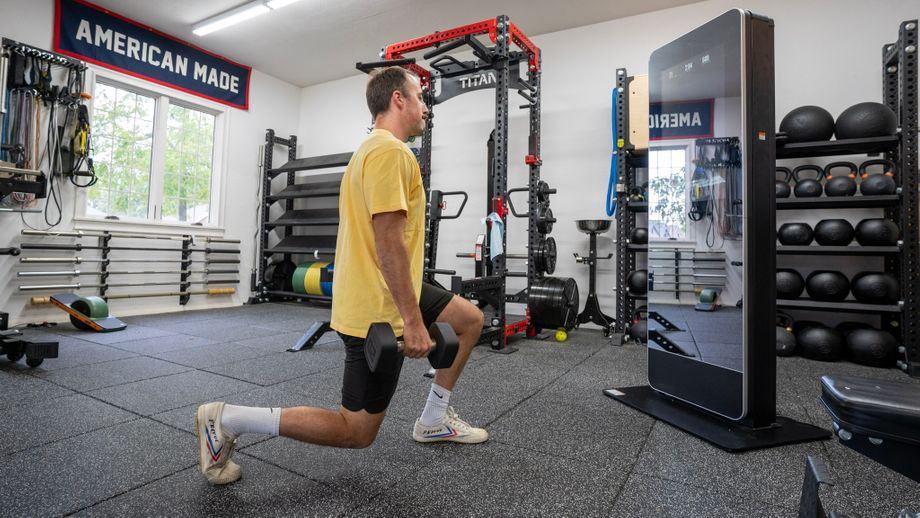We test and review fitness products based on an independent, multi-point methodology. If you use our links to purchase something, we may earn a commission. Read our disclosures.
We don’t skip leg day.
You shouldn’t either if you’re trying to maintain total-body fitness. Working out your lower body strengthens your legs and core, helps reduce your risk of injury, burns calories to promote weight loss, and could translate to improved sport performance too.
What movements will help you get the most from your leg day? There are many great exercises to choose from, but one of the most popular exercises is the leg extension. Commercial gyms provide several leg extension machines so gym goers can freely hop on, hit a few reps, and move onto the leg press, leg curl, or other popular leg-focused machines.
The leg extension is a great quad exercise. Unfortunately, it doesn’t hit any of the other muscle groups and is not considered a functional sports movement. Benefits of performing leg extensions regularly often do not translate to improved athletic performance.
For this reason, you may prefer something that gives a little more bang for your buck and, if so, we’ve got good news for you. If you’re looking for a leg extension alternative, we’ve got 10 of the best for your viewing pleasure. More below!
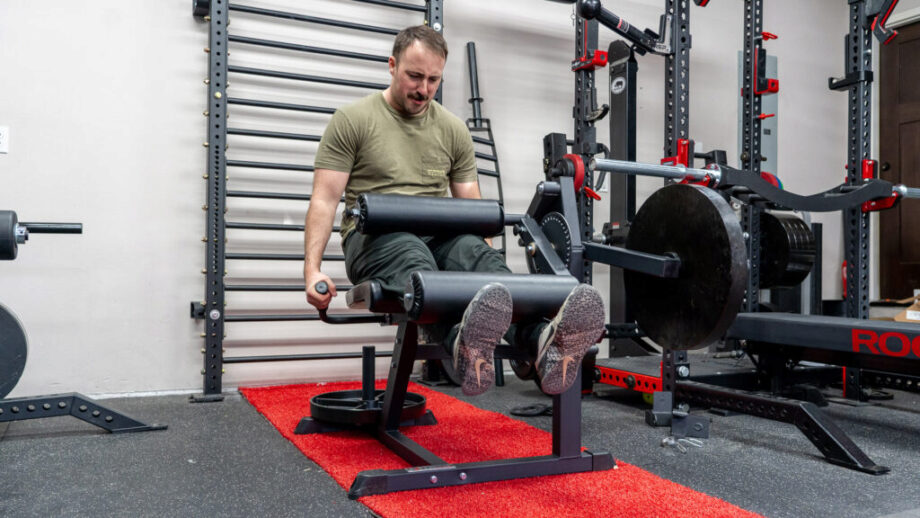
Leg Extensions Muscles Worked
The leg extension is a great exercise for isolating the quad muscle group, including the rectus femoris, vastus lateralis, vastus intermedius, and vastus medialis, the teardrop-shaped muscle that bodybuilders often love to highlight.
While leg extensions are one of the best exercises for targeting the quadriceps muscles. They are very effective in bodybuilding for shaping, sculpting, and correcting muscle imbalances.
Leg Extension Benefits
The leg extension is an isolation exercise that targets your quadriceps. Individuals who perform leg extensions regularly and utilize progressive overloading should see strength and size gains in their lower body.
In addition, studies have shown that leg extension exercises could contribute to reducing leg and knee pain when performed under certain conditions.
The British Journal of Sports Medicine1 determined in a 2019 double-blind randomized trial that low-load leg extension exercises combined with blood flow restriction helped reduce patellofemoral pain caused by daily living activities by 93%.
Another 2019 study, performed by the International Journal of Sports Medicine2, used single-leg extension exercises, along with bodyweight half-squats, walking, and blood flow restriction, to determine exercise’s effect on quadricep function following an ACL reconstruction surgery. The study determined that use of single-leg extensions, combined with BFR, was “feasible, safe and effective” and “can improve quadriceps function long after ACLR.”
These results indicate that leg extension exercises are an excellent addition to a regimen engineered toward managing patellofemoral pain or rebuilding strength, once medically cleared, following an ACL reconstruction, provided it is coupled with blood flow restriction. Are there recent studies, however, that measure the effectiveness of leg extensions without BFR?
A 2019 study completed by Medicine and Science in Sports and Exercise3 endeavored to observe the effect of “knee extension, leg flexion, and leg press” exercises on strength gain and symptoms on a control group of individuals with knee osteoarthritis. The trial split the group into three– a concentrically focused group, an eccentrically focused group, and a group that performed no exercise.
Results indicated that “both resistance training types effectively increased leg strength” and both “knee flexion and knee extension muscle strength can modify function and pain symptoms irrespective of muscle contraction type.”
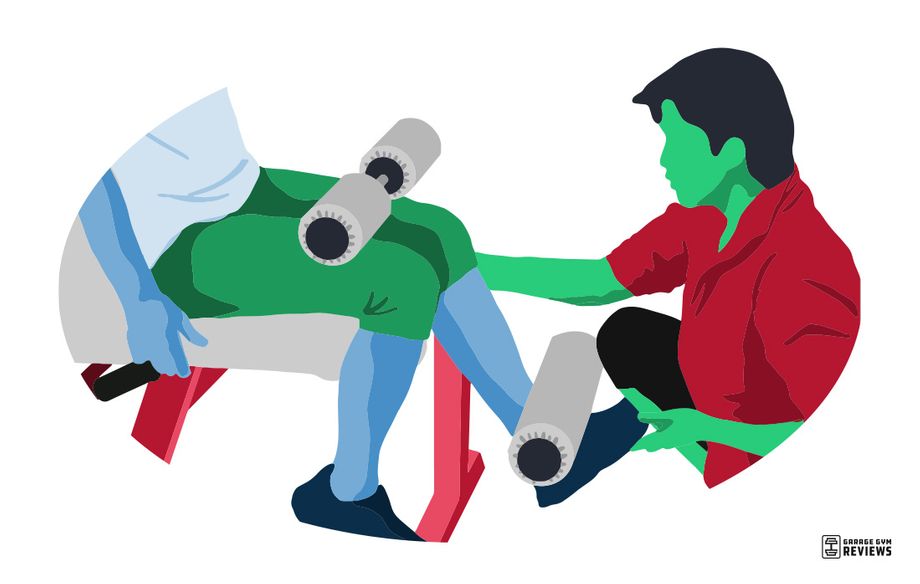
Leg Extension Drawbacks
The leg extension is excellent for the quads, but it doesn’t activate any other muscles. If you’re trying to hit multiple muscle groups with a single compound exercise, the leg extension is not a viable choice.
In addition, you typically need a leg extension machine to actually do the exercise. Most commercial gyms have this equipment available, but many home gym owners are hesitant to buy a big, bulky piece of equipment just for leg extensions. For the same price, you can find much more versatile equipment to add to your ensemble.
Lastly, the leg extension is not a functional sports movement. Bodybuilders will be pleased with the cosmetic benefits associated with regular leg extensions, but strength gains are limited compared to other, more functional movements, and leg extensions often do not translate into improved athletic performance.
For these reasons, you may want to consider something that targets additional leg muscles or doesn’t require the use of a machine. That’s why we’ve laid out some of the best leg extension alternatives for your workout routine.
A good leg extension alternative is beginner-friendly, provides a more comprehensive leg workout, and requires little to no equipment to perform.
Without further ado, here are our favorite leg extension alternative exercises.
1. Bulgarian Split Squat
Why it’s great: The Bulgarian split squat hammers your quads, glutes, hamstrings, and calves. They can be performed with just your bodyweight or with free weights for an added challenge.
How to do it:
- Stand in front of the bench, facing away from it. You can use any sturdy object in place of a bench if you don’t happen to have one where you’re exercising.
- Place one foot on the bench behind you. You want to be far enough away from the bench that your front knee makes a 90-degree angle at the bottom of the movement.
- Keeping a tall chest, bend your front knee and lower yourself into a squat. You will feel a big stretch in the quad of your back leg.
- Lightly tap your back knee on the floor, if possible, then drive through your front heel and extend your hip to return to a standing position.
- Repeat for the desired number of reps, then switch sides and repeat.
RELATED: Dumbbell Leg Workout: Try These Moves For Strong Legs
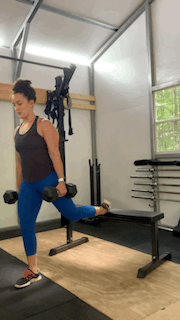
2. Split Squat
Why it’s great: Split squats check all the boxes: They improve your mobility and muscular endurance while simultaneously increasing muscular strength and size, specifically targeting the quads, glutes, hamstrings, and core muscles.
How to do it:
- Stand with your feet shoulder-width apart. Step forward with one foot to assume a split stance.
- Lower until your knees are at a 90-degree angle. The knee of your front foot should be above your ankle.
- Slowly rise, maintaining your split stance. Keep your upper body centered and your back straight throughout the full range of motion.
- Perform as many repetitions as needed for your first side.
- Repeat for your other side.
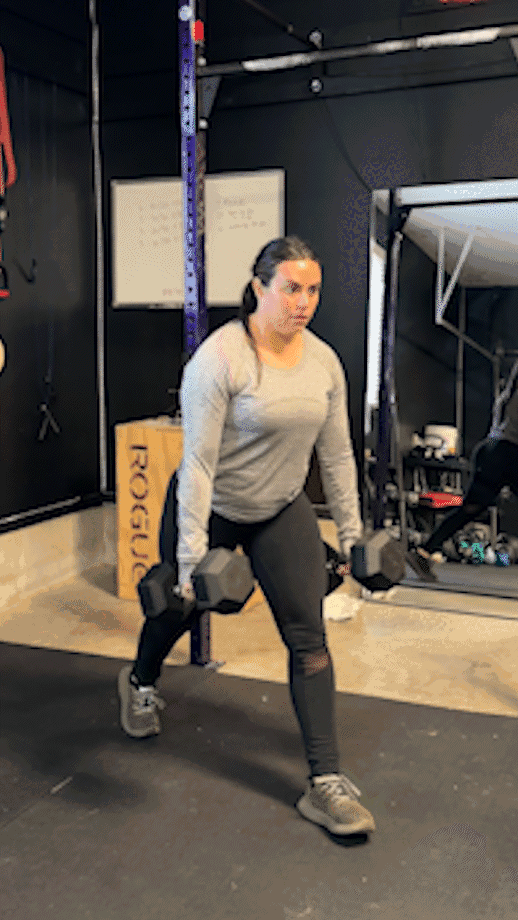
3. Reverse Lunge
Why it’s great: Everyone knows the merits of regular lunges, but reverse lunges are an unsung hero in the gym. They provide great activation to the core, glutes, and hamstrings, while reducing the stress on your front knee.
How to do it:
- From a standing position, step backward into your lunge. Your front foot should remain planted while your back foot should only touch down with your toes.
- Lower yourself into a lunge, making 90-degree angles with both knees. Your head, torso, and back knee should form a straight line at the bottom of the movement.
- Lightly touch your back knee to the floor, then return to the starting position by pushing through your front heel, driving your hips forward, and bringing your back foot forward to be side-by-side with your front foot again. Keep your torso upright from start to finish.
- You may repeat for the desired number of reps, then switch sides, or you may alternate sides. Repeat as needed.
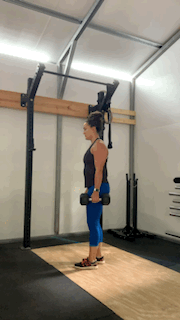
4. Forward Lunge
Why it’s great: The classic forward lunge is one of the best exercises to incorporate into your leg day workout. It’s easy to perform and provides great activation to the quads, glutes, hamstrings, and hip adductors.
How to do it:
- The forward lunge may be performed as a bodyweight exercise or with free weights. Start by standing with your feet shoulder-width apart.
- Step forward with your right foot and bend the knee to create a 90-degree angle with both knees. The knee of your left leg should hover above the floor or lightly tap it. Your right knee should be stacked directly above your ankle.
- Push from your front foot to return to the starting position.
- Repeat the movement stepping with the left foot instead.
- Repeat as needed.
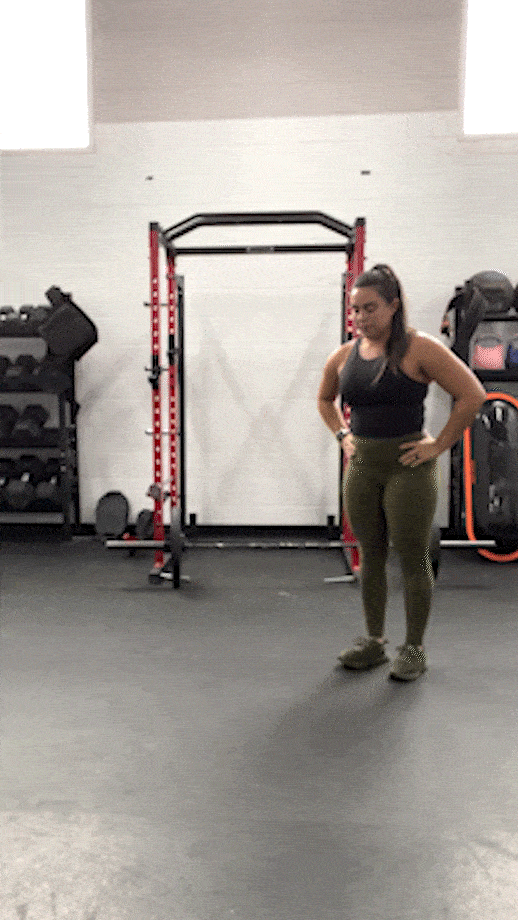
5. Walking Lunge
Why it’s great: Walking lunges are excellent because they mimic movements you will most likely use in your everyday life. As with other lunge variations, you’ll hit the core, glutes, hamstrings, and quads.
How to do it:
- From a standing position, take a big step forward and bring yourself down into a lunge, lowering the back knee towards the floor.
- Shift your weight into your front foot and step forward with the other leg to continue lunging across the room.
- Repeat for desired distance or number of reps.
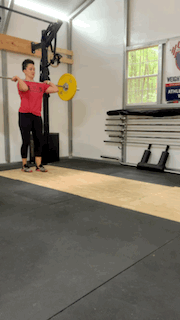
6. Step-Ups
Why it’s great: Step-ups are a low intensity, beginner-friendly way to improve lower body strength, namely the quads, hamstrings, glutes, and hip extensors. Not only are step-ups easy to perform, they also pose less risk of injury compared to other lower body movements, as they place less strain on your hips, knee joints, and lower back.
How to do it:
- Stand in front of an 8 inch box, or similarly sized step-up platform.
- Lean your torso forward as you place your whole foot onto the box.
- Supporting your bodyweight with the front leg, drive your opposite knee up into the air until your thigh is parallel to the ground. Maintain a strong core as you perform the movement.
- Slowly return your driving leg to the starting position.
- Switch your starting foot and repeat all movements.
- Repeat as needed, alternating legs for each rep.
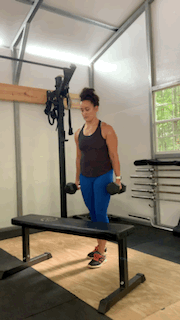
7. Narrow-Stance Squats
Why it’s great: A narrow-stance squat squat variation performed with feet shoulder-width apart or even narrower, hitting the quadriceps, glutes, and adductors predominantly. As with most squat variations, the movement may be performed with bodyweight only, or using a suitcase grip and dumbbells, a goblet grip with a kettlebell, or with a barbell on your back.
How to do it:
- Stand with your feet shoulder-width apart or narrower.
- Inhale and, breaking from the hips, squat until your thighs are parallel with the floor. Your knees should not pass in front of your toes at any time. Maintain a tall chest, flat back, and strong core from start to finish.
- From the bottom of the squat, drive from your heels and exhale to return to a standing position.
- Repeat as needed.
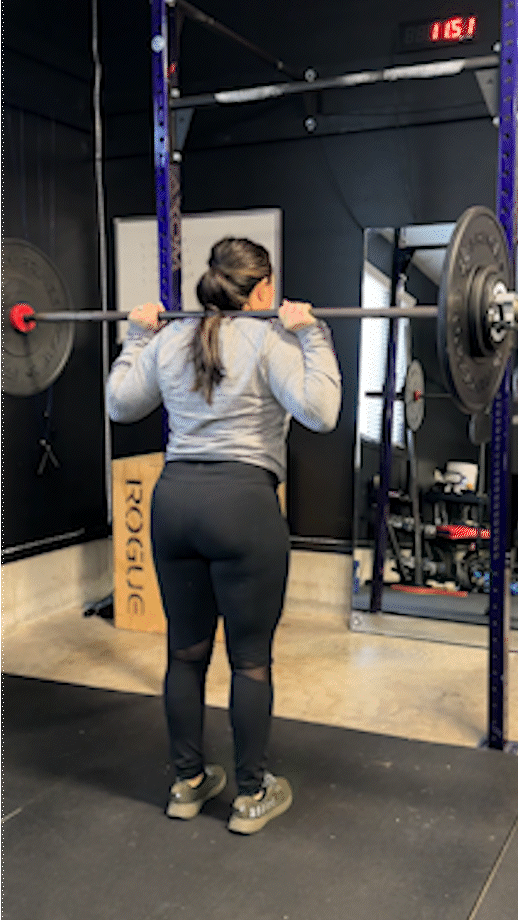
8. Elevated Heel Squat
Why it’s great: Elevated heel squats are a squat variation in which the lifter’s heels are raised through use of a squat wedge, although lifters without this special piece of equipment could substitute a standard weight plate for the same result. By raising the heel, you focus on the quadriceps much more versus the standard squat while simultaneously reducing the demands on the posterior chain.
How to do it:
- Place a squat wedge or weight plate on the floor. Stand with your feet shoulder-width apart with your heels elevated by the wedge or plate.
- Inhale and, breaking from the hips, squat until your thighs are parallel with the floor. Your knees should not pass in front of your toes at any time. Maintain a tall chest, flat back, and strong core from start to finish.
- From the bottom of the squat, drive from your heels and exhale to return to a standing position.
- Repeat as needed.
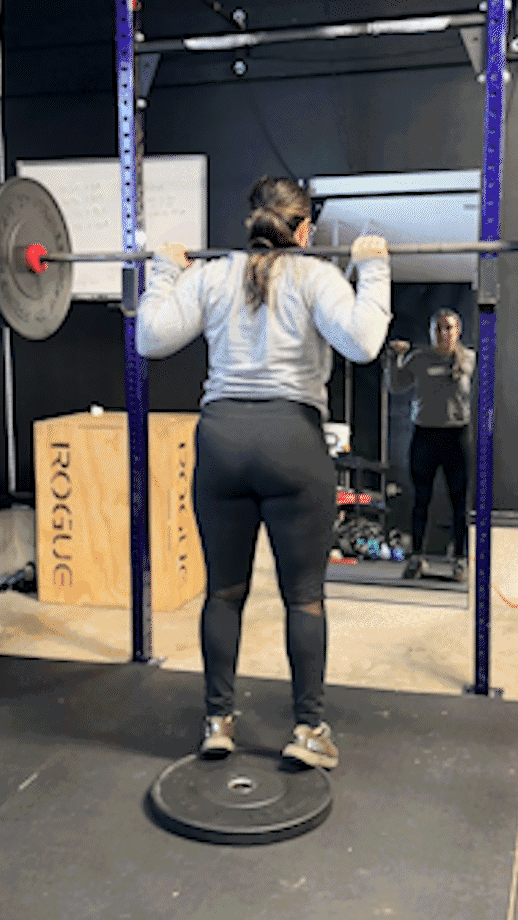
9. Lateral Lunges/Cossack Squat
Why it’s great: Lateral lunges and Cossack squats are similar, as both involve you shifting your weight from side to side. The goblet Cossack squat is a lower-body wrecker, hitting your quads, hamstrings, glutes, and hip abductors while also activating the core, abs, and lower back.
How to do it:
- Start with your feet hip-width apart.
- Take a big step to the side with your left leg, bending your left knee and pushing hips back. Lower yourself into the lunge until your left knee is at a 90-degree angle.
- If you are performing a lateral lunge, you are finished and may proceed to Step 4. If you want to perform a Cossack squat, rotate your right foot onto your heel and point your toes up to the ceiling. Keep your left heel planted to the floor and your torso tall.
- Push from your left foot to return to the starting position. Complete all steps for your other side.
- Repeat as needed.
RELATED: Best Dumbbell Exercises
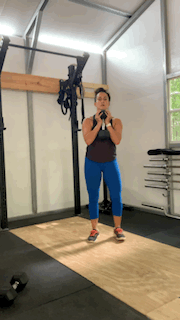
10. Sissy Squat
Why it’s great: The sissy squat might sound like it’s for wussies, but only the toughest stand a chance at completing even a single rep with excellent form. This movement absolutely wreaks havoc on your quadriceps while simultaneously engaging your core, calves, hip flexors and adductors, and glutes.
How to do it:
- Start with your feet shoulder-width apart and your heels raised using squat wedges or a weight plate. Your toes will remain on the floor pointing forward.
- Bend your knees slightly and engage your core. You should form a straight line from your neck to your knees.
- Lower your body into a squat, pausing for three seconds at the bottom of the movement.
- Push with your legs to return to the starting position.
- Repeat as needed.
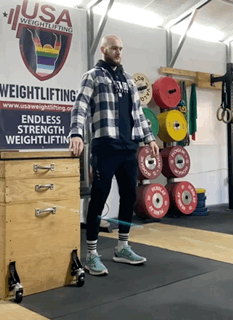
Final Thoughts: Leg Extension Alternatives
Whether you’re looking for a well-rounded exercise or simply want to spice up your workout routine, our leg extension alternatives help you get a comprehensive lower body workout that hits the quadriceps, legs, core, and much, much more.
Give one or some of these movements a whirl on your next leg day!
Q&A: Leg Extension Alternatives
Where can I buy a leg extension machine?
If you’ve considered the pros and cons of the leg extension and you’d like to purchase one for your home gym, we found the Titan Seated Leg Curl/Extension Machine to offer great value.
Additional options are available through fitness equipment manufacturer websites, local fitness supply retailers, and Amazon, of course.
How do I perform a leg extension without a leg extension machine?
The easiest way is to simply hop on the leg extension machine and knock out a few reps. Unfortunately, leg extension machines are expensive and take up lots of space, so they’re not always the most realistic option, especially at home.
You can perform leg extensions with a resistance band. Here’s how:
1. Find a chair and a sturdy anchor point. Wrap one end of your resistance band around the anchor and the other end around your ankle or ankles. You may perform the exercise unilaterally or bilaterally.
2. Starting from a seated position with your knees forming 90-degree angles, slowly straighten your legs.
3. Slowly return to the starting position.
4. Repeat as needed.
Can I do the leg press instead of the leg extension?
In short, yes. You can.
For most people, the leg press is the superior choice because it activates other muscles in your legs. If you are really trying to isolate the quads, however, don’t cut out leg extensions completely though.
Can you build quads without leg extensions?
Absolutely. No one exercise will make or break your routine, but some offer more upside than others.
A great approach used by many involves laying a solid lower body foundation by squatting regularly, while leg extensions are often performed at the tail end of the workout to really feel the burn.
All in all, you want to do what works best for you and your goals and, when in doubt, never be shy to ask a personal trainer or coach!
References
1. Giles L, Webster KE, McClelland J, Cook JL. Quadriceps strengthening with and without blood flow restriction in the treatment of patellofemoral pain: a double-blind randomised trial. Br J Sports Med. 2017;51(23):1688-1694. doi:10.1136/bjsports-2016-096329
2. Kilgas MA, Lytle LLM, Drum SN, Elmer SJ. Exercise with Blood Flow Restriction to Improve Quadriceps Function Long After ACL Reconstruction. Int J Sports Med. 2019;40(10):650-656. doi:10.1055/a-0961-1434
3. Vincent KR, Vasilopoulos T, Montero C, Vincent HK. Eccentric and Concentric Resistance Exercise Comparison for Knee Osteoarthritis. Med Sci Sports Exerc. 2019;51(10):1977-1986. doi:10.1249/MSS.0000000000002010
Further reading

Now, you can use the code GGR at checkout to save 10% on belts, apparel and more! Read more

Is pre-workout bad for your heart? It can be easy to believe considering how intense some high-stim pre-workouts are. So, we had a sports dietitian explain. Read more

Build god-tier quads when you perform the Sissy squat. The best quad exercise you're not doing, according to a certified personal trainer. Read more

As our Rogue Plate Carrier review points out, this is a minimalist weight vest with maximal benefits. Read more

